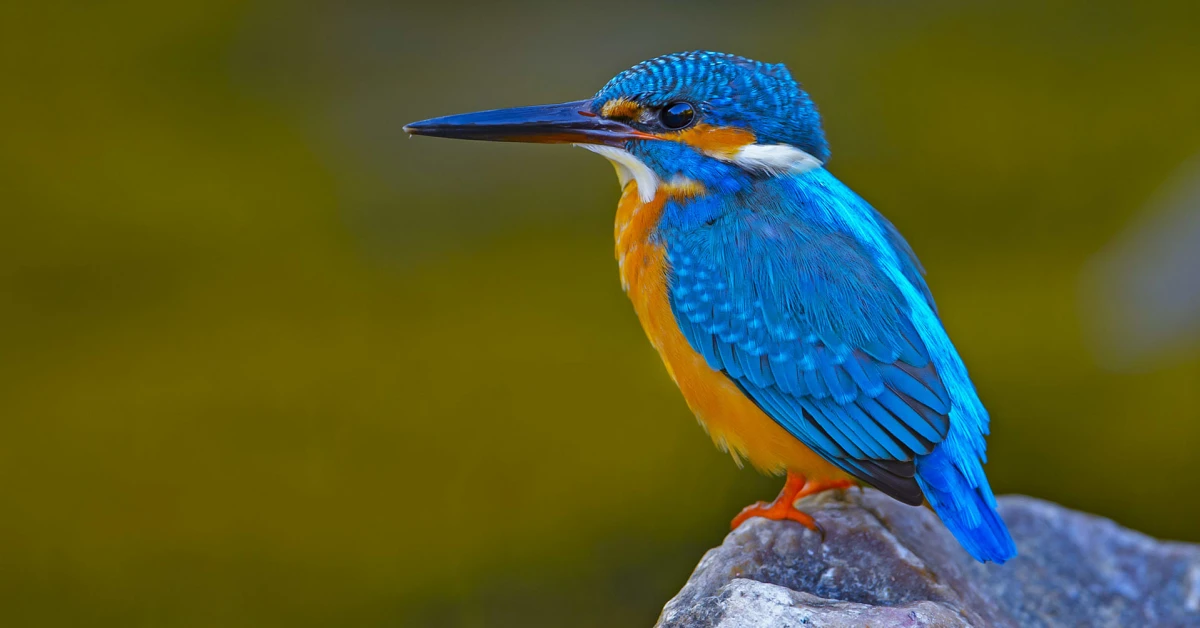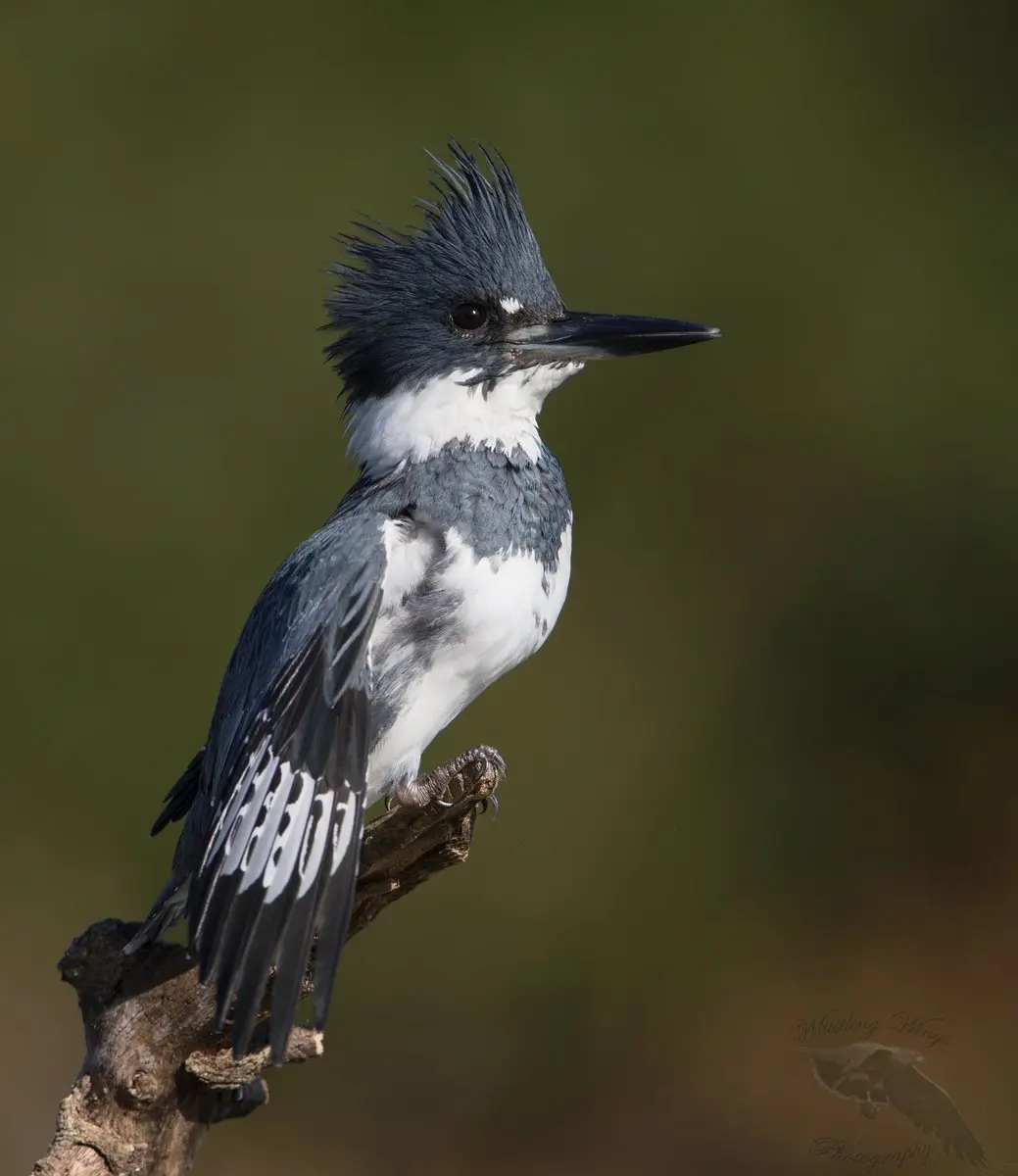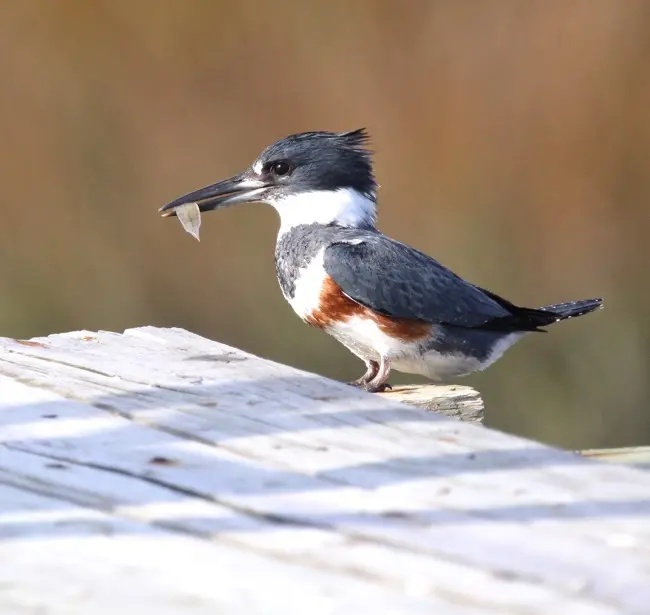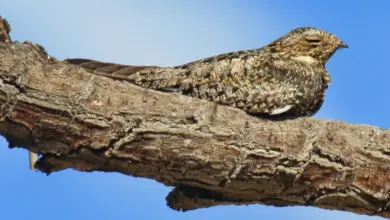Kingfisher Bird: Types, Habitat, Characteristics, and Conservation
When observing nature’s stunning avian creations, the Kingfisher Bird stands out as a mesmerizing example of brilliance and adaptability. With their vibrant colors and expert fishing capabilities, Kingfisher Birds are much more than just pretty sights; they exemplify a crucial balance within their respective ecosystems. Found in diverse habitats, from the bustling waterways of the Amazon Basin to tranquil North American lakes, these birds possess a wide array of species, each exhibiting unique behaviors, physical characteristics, and historical significance.
Through this exploration of the Kingfisher Birds, we can not only admire their beauty but also understand their roles in environmental health, cultural history, and ongoing conservation efforts. This comprehensive examination seeks to delve deeply into the diverse types of Kingfisher Birds, their habitats, physical attributes, feeding behaviors, reproductive cycles, and their cultural significance in various societies around the globe.

Types of Kingfisher Birds
Kingfishers belong to the family Alcedinidae, comprising approximately 90 species spread across continents, particularly thriving in tropical and subtropical regions. Each species exhibits distinct features and adaptations that suit their environments, making them fascinating subjects of study.
- Diversity: They range in size and color, with some species, like the Giant Kingfisher, measuring up to 46 cm (18 inches) in length, while others, like the African Dwarf Kingfisher, are a mere 10 cm (3.9 inches).
- Feeding Dynamics: Their hunting preferences vary; while most are proficient fishers, certain species also consume insects, crustaceans, and even small mammals, showcasing their adaptability based on available food sources.
- Cultural Symbolism: In folklore, kingfishers are often revered, symbolizing peace and tranquility, as seen in various mythologies where they are associated with calm waters and prosperity.
- Geographical Distribution: While many species are found in the Americas, others are primarily located in Africa, Asia, and Australia. Each region showcases unique ecological relationships and adaptations for survival.
Thus, despite sharing a family lineage, kingfisher species are as diverse in their behaviors and habitats as they are in their physical appearances.
Amazon Kingfisher Bird
The Amazon Kingfisher (Chloroceryle amazona) is a remarkable bird known for its vibrant green and rufous plumage and impressive adaptability. Native to the waterways of the Amazon Basin, this species embodies the lush biodiversity and ecological richness of its environment.
Description and Appearance
Characterized by a robust body and a large head, the Amazon Kingfisher has a notably large, dagger-like bill that is predominantly red. Males display a bright green upper body complemented by rufous underparts, while females often have a slightly subdued coloration. The striking white collar around the neck adds to this bird’s distinguished appearance, making it easily recognizable among other avian inhabitants of the Amazon.
Habitat and Range
The Amazon Kingfisher thrives in forested habitats near rivers, lakes, and freshwater ecosystems throughout the Amazon rainforest in Brazil, Colombia, Peru, and other surrounding countries. This preference for rich aquatic ecosystems underscores its reliance on healthy surroundings for survival.
Feeding Behavior
This kingfisher is renowned for its exceptional fishing skills. Employing a hunting strategy that involves perching quietly over water, it watches for fish before diving headfirst to capture its prey. The Amazon Kingfisher’s diet predominantly consists of fish, although it also feeds on crustaceans and aquatic insects, showcasing its resourceful nature.
Nesting Habits
Nesting occurs in burrows excavated into riverbanks. This behavioral adaptation provides shelter for young birds against predators and environmental challenges. A typical clutch contains several eggs, with both parents participating in the incubation, highlighting their cooperative nature in nurturing offspring.
Conservation Status
The Amazon Kingfisher is currently classified as a species of “Least Concern” by the IUCN. However, habitat destruction, primarily due to deforestation, poses significant threats to its population. Conservation efforts focused on safeguarding the Amazon rainforest are critical for sustaining not only this captivating bird but also the myriad of unique species inhabiting this diverse ecosystem.
In summary, the Amazon Kingfisher is a vivid reflection of the beauty and complexity of the Amazon Basin. Its vital role in the aquatic ecosystem and its dependence on healthy environments make it an important species for conservation.
Giant Kingfisher
The Giant Kingfisher (Megaceryle maxima) reigns as the largest kingfisher species, primarily found in Africa and known for its striking appearance and solitary behavior.
Description and Appearance
Measuring about 43 cm (17 inches), the Giant Kingfisher is characterized by its robust physique, large head, and long, pointed bill. Its dark brown upperparts contrast sharply with the predominantly white underparts, which exhibit a speckled brown pattern. This striking coloration allows it to effectively camouflage along riverbanks and coastlines, as it searches for prey.
Habitat and Distribution
Giant Kingfishers inhabit a diverse range of wetland environments, including rivers, lakes, and coastal areas in Africa. Preferring well-vegetated banks, they are often observed perched on branches overhanging the water, showcasing their preference for areas rich in aquatic life.
Feeding Behavior
This kingfisher primarily consumes fish, though its diverse diet includes crustaceans and amphibians. Its hunting technique involves either diving into the water or using a perch to observe before plunging, exemplifying its agility and precision in capturing prey.
Social Behavior
Unlike many other species, Giant Kingfishers are generally solitary or found in pairs, demonstrating a preference for living independently. Their striking calls can often be heard echoing through their habitats, a crucial aspect of their territorial nature.
In conclusion, the Giant Kingfisher captures attention not only for its size but also for its captivating hunting techniques. It exemplifies the specialized adaptations that allow it to thrive in its environment, underscoring the role of kingfishers as skilled avian predators.
Belted Kingfisher
The Belted Kingfisher (Megaceryle alcyon) holds a notable place among North American birds, recognized for its distinctive appearance and vocal nature.
Description and Appearance
Measuring about 30 cm (12 inches) in length, the Belted Kingfisher is easily identified by its crested head, bluish-gray plumage, and the distinctive brownish-red band across the female’s lower breast. This stark coloration, combined with the bird’s unique shape, makes it a striking figure along rivers and lakes.
Habitat and Distribution
This kingfisher is widespread across the United States and Canada and typically resides near water bodies such as rivers, lakes, and coastlines. Its preference for environments rich in fish makes it an integral species in local ecosystems.
Feeding Behavior
Primarily piscivorous, the Belted Kingfisher’s diet consists of fish, crustaceans, and insects. Their feeding behavior involves perching silently over water, scanning for movement before diving decisively to catch prey with their sharp, powerful bill.
Vocalization
One of the defining characteristics of the Belted Kingfisher is its loud, rattle-like call, often heard as they take flight from a perch. This vocalization serves various purposes, including establishing territory and communicating with potential mates.
In summary, the Belted Kingfisher is a vital component of North America’s waterways, displaying an aesthetic that captivates bird watchers and challenges the skills of even the most seasoned hunters.
Green Kingfisher
The Green Kingfisher (Chloroceryle americana) is a small, vibrant bird primarily found throughout Central and South America, known for its distinctive appearance and unique behaviors.
Description and Appearance
This kingfisher measures about 21 cm (approximately 8.5 inches) in length, characterized by its dark green plumage adorned with distinctive white markings. Males usually exhibit a rufous breast, while females possess two green bands on their chest, adding to their color palette.
Habitat and Distribution
Green Kingfishers inhabit slow-moving freshwater streams, ponds, and coastal lagoons, favoring locations with dense vegetation. Their geographical range extends from the southern United States throughout Central America and into parts of South America.
Feeding Behavior
Primarily feeding on small fish, crustaceans, and aquatic insects, the Green Kingfisher showcases remarkable diving skills and keen eyesight as it hunts for food near the water’s surface. This adaptability allows it to thrive in various habitats rich in aquatic life.
Nesting Habits
Unlike many other kingfisher species, Green Kingfishers excavate burrows into riverbanks up to three feet deep. This unique nesting behavior provides a safe environment for their young, shielding them from environmental dangers.
In conclusion, the Green Kingfisher illustrates the diversity among kingfisher species, adapting uniquely to its environment while embodying the vibrant beauty characteristic of these stunning birds.
Kookaburra
The Kookaburra, part of the genus Dacelo, often referred to as the “laughing kookaburra,” is famous for its distinctive call resembling human laughter. This bird holds a special place in Australia and New Guinea, where it thrives in diverse habitats, from forests to open woodlands.
Description and Appearance
Kookaburras are one of the largest kingfishers, growing to about the size of a crow, with a stout body and a heavy bill. Their coloration typically includes shades of brown, cream, and white, allowing them to blend seamlessly into their surroundings.
Habitat and Distribution
These birds inhabit various environments across Australia and New Guinea, favoring areas with open woodlands and forest edges. Their adaptability enables them to thrive in both natural and urban settings.
Feeding Behavior
Kookaburras primarily prey on small mammals, reptiles, and aquatic life. They employ different hunting techniques based on prey availability, showcasing their intelligence and adaptability.
Social Behavior
Highly social creatures, kookaburras often form family groups and display strong territorial behaviors, frequently engaging in vocalizations that echo across their habitats. Their calls often serve both social and territorial purposes.
In summary, the Kookaburra exemplifies the adaptability and varying characteristics found amongst kingfishers, highlighting the diverse lifestyles and behaviors of these fascinating birds.
The exploration of kingfisher species sets the stage for understanding their habits, habitats, and the significance of these avian wonders. Each species carries unique traits and adaptations that allow them to thrive in their environments, yet they all face similar threats. As we delve deeper into their habitats and behaviors, the implications for conservation and cultural significance become increasingly vital in promoting their survival.
Habitat and Distribution
The diverse habitats of kingfishers reflect their adaptability and specialization, with most species primarily thriving in tropical and subtropical regions globally. Their reliance on aquatic ecosystems shapes their distribution patterns, crucial for their feeding and nesting habits.

Aquatic Habitats
- Freshwater Ecosystems: Kingfishers are closely associated with slow-moving or still water bodies, such as rivers, lakes, and wetlands. These habitats provide ample food resources, allowing them to hunt effectively.
- Estuaries and Mangroves: Certain kingfishers, such as the Common Kingfisher, thrive in estuarine environments where freshwater meets saltwater, benefiting from the rich diversity of aquatic life.
- Terrestrial Habitats: Some species have adapted to live in terrestrial environments, foraging on land for insects and small vertebrates. This ability enhances their survival in varying ecological niches.
Geographical Distribution
Kingfishers demonstrate a broad distribution across several continents, with significant populations located in tropical regions:
- Global Range: Kingfishers inhabit all continents except Antarctica, showcasing their adaptability to different ecosystems.
- North American Presence: Limited species exist in the Americas, with the Belted Kingfisher being prominent throughout North America.
- Habitat Specificity: Certain species are highly specialized and vulnerable to environmental changes, underscoring the importance of habitat preservation.
In conclusion, kingfishers exhibit a captivating diversity of habitats that illustrate their evolutionary success. Their dependence on pristine aquatic environments complicates their conservation status, necessitating a concerted effort to protect these vital ecosystems.
Tropical and Subtropical Regions
Kingfishers predominantly inhabit tropical and subtropical regions, where lush vegetation and abundant water bodies provide essential resources for survival.
Description of Habitats
- Tropical Forests: Many kingfisher species flourish in humid tropical forests, utilizing dense understory vegetation for nesting and hunting.
- Wetlands and Marshes: These aquatic-rich environments support high fish populations, providing ample hunting grounds for kingfishers.
- Coastal Areas: Some kingfishers inhabit coastal zones where freshwater and saltwater interface, capitalizing on diverse food sources.
Biodiversity and Adaptability
The diversity of kingfisher species in these regions contributes to unique ecological relationships, allowing them to occupy various niches and adapt to specific food sources. For instance, the prevalence of fish and crustaceans in these environments directly influences their evolutionary traits.
In summary, the habitats of kingfishers across tropical and subtropical regions emphasize their reliance on rich biodiversity. Conservation initiatives focused on these environments are vital for ensuring the stability of both kingfisher populations and the ecosystems they inhabit.
Freshwater Ecosystems
Kingfishers are intimately connected to freshwater ecosystems, which play a crucial role in their feeding and reproductive behaviors.
Characteristics of Freshwater Ecosystems
- Rich Biodiversity: Freshwater systems, such as rivers, lakes, and ponds, support diverse fish populations and aquatic invertebrates, providing a steady food supply for kingfishers.
- Vegetation: Dense riparian vegetation along water bodies provides essential perches for hunting, as well as nesting locations.
- Ecological Indicators: The presence of kingfishers often indicates healthy aquatic ecosystems, serving as indicators of environmental stability.
Geographical Distribution
Kingfishers are distributed broadly across many regions, particularly where freshwater habitats are abundant. Their distribution patterns reflect their dependence on these ecosystems for feeding and nesting, making habitat preservation paramount.
In summary, freshwater ecosystems are vital for the survival of kingfishers, emphasizing the need for conservation efforts aimed at maintaining these crucial environments. This interconnectedness underscores the fundamental role that kingfishers play as both hunters and indicators of ecosystem health.
Nesting Sites
Kingfishers display fascinating nesting habits, which are closely tied to their ecological needs and behaviors.
Nesting Habitat
- Burrow Excavation: Most species nest in burrows that they excavate along riverbanks or other suitable earth banks. The depth and structure of these burrows vary significantly among species.
- Protection from Predators: Nesting in burrows provides safety from predators and environmental challenges, allowing kingfishers to safeguard their young effectively.
Nesting Behavior
- Incubation: Both parents typically participate in nesting and incubation, fostering cooperation and shared responsibility in raising offspring.
- Clutch Size: A typical clutch usually consists of between three to seven eggs, with variations seen across different species. The incubation period commonly lasts about 19 to 21 days.
Importance of Nesting Sites
The availability of suitable nesting sites is paramount for kingfisher populations. Habitat destruction can lead to decreased nesting opportunities, further emphasizing the need for conservation-focused initiatives.
In conclusion, kingfishers exhibit unique nesting behaviors that reflect their adaptations to aquatic environments. Recognizing the importance of nesting sites is essential for ensuring the sustainability of these captivating bird populations.
Physical Characteristics
Kingfishers are easily identifiable due to their striking physical characteristics, including size, coloration, and distinctive features that contribute to their survival and hunting efficiency.
Size and Weight Variations
- Diverse Sizes: Kingfishers vary substantially in size, ranging from the tiny African dwarf kingfisher at about 10 cm (3.9 inches) to the giant kingfisher, which can grow up to 46 cm (18 inches).
- Weight Differences: Weight can also vary; for instance, the common kingfisher weighs between 34 to 46 grams, while the giant kingfisher can reach weights of around 465 grams.
- Influence of Size on Behavior: Larger species often have different dietary needs and hunting behaviors compared to smaller ones, reflecting adaptations to their environments.
Plumage and Coloration
- Vibrant Colors: Kingfishers are renowned for their colorful plumage, often displaying hues of blue, green, orange, and chestnut. The vibrant colors serve essential functions, including attracting mates and providing camouflage.
- Structural Coloration: Many of the striking blues found in kingfisher feathers arise from structural coloration rather than pigment, resulting from the microscopic structure of their feathers.
- Sexual Dimorphism: In some species, males and females display subtle differences in coloration, which can influence mating behavior.
Distinctive Features
- Adapted Beak: Kingfishers possess long, pointed, dagger-like beaks that are perfectly adapted for hunting fish and other aquatic prey.
- Agile Build: Their body structure is compact yet streamlined, allowing for swift movements in the air and precision when diving into the water.
- Eating Habits: Kingfishers have specialized adaptations in their beak and vision, allowing them to see underwater and accurately judge distances when diving for prey.
In summary, the physical characteristics of kingfishers are not only aesthetically striking but serve practical functions that enhance their survival and hunting prowess in aquatic habitats.
Behavior and Lifecycle
Kingfishers exhibit unique behaviors and lifecycle patterns that underscore their adaptations to various environments, from hunting and feeding habits to reproductive strategies.
Feeding Habits and Diet
- Predominantly Piscivorous: Kingfishers primarily feed on fish but are also opportunistic feeders, consuming a variety of prey, including crustaceans, amphibians, and insects.
- Hunting Behavior: Their hunting strategy often involves perching silently, scanning the water, and diving to capture prey with remarkable precision.
- Dietary Preferences: Specific species may have preferences for certain sizes and types of fish, influenced by their physical characteristics and hunting styles.
Hunting Techniques
- Perching and Diving: Kingfishers typically choose high vantage points for hunting, enabling them to spot fish from above. Upon locating a target, they plunge into the water with speed and accuracy.
- Behavioral Observations: Certain species exhibit adaptable hunting behaviors based on environmental conditions, altering their techniques to maximize success.
- Catch Processing: After catching prey, kingfishers often return to their perches to beat the fish against hard surfaces before swallowing it.
Reproductive Behavior
- Monogamous Pairing: Most kingfisher species exhibit serial monogamy during the breeding season, selecting new mates each year.
- Nesting and Incubation: Nesting typically occurs in spring, with both parents participating in digging burrows for their eggs. The incubation period lasts around 19 to 21 days.
- Chick Development: After hatching, chicks are reliant on their parents for food, learning to hunt independently before fledging, a critical phase in their development.
Nesting and Brooding
- Nesting Structures: Kingfishers excavate burrows in riverbanks for nesting, providing protection against predators and adverse weather conditions.
- Clutch Size and Brooding: Clutch sizes can range from three to seven eggs, with both parents engaging in brooding and subsequent feeding of the young.
- Fledgling Dependency: After leaving the nest, fledglings may continue to depend on their parents for sustenance until fully capable of independent hunting.
In conclusion, kingfishers display fascinating behaviors and life cycles characterized by adaptations suited to their environments. Their cooperative reproductive strategies and specialized hunting techniques emphasize their essential roles in ecological systems.
Conservation Status
Kingfishers, while captivating, face significant threats that impact their populations and conservation status.

Threats to Kingfisher Populations
- Habitat Destruction: The primary threat to kingfishers stems from habitat destruction and alteration, including logging, urban development, and pollution of water bodies, which diminish their available ecosystems.
- Pollution: Chemical pollutants from agricultural runoff and industrial waste can severely harm aquatic habitats, leading to declines in fish populations the primary food source for many kingfisher species.
- Human Activities: Urbanization leads to habitat fragmentation, which can isolate populations. Some species are directly impacted by hunting and shooting, perceived as competitors in local fish stocks.
- Climate Change: Changing climate patterns can disrupt breeding cycles, food availability, and the overall health of water systems where kingfishers thrive.
Species on the IUCN Red List
- Conservation Classifications: The IUCN Red List categorizes various kingfisher species based on their risk of extinction. One species is listed as “Endangered,” while 11 are considered “Vulnerable.”
- Population Status: The Common Kingfisher (Alcedo atthis) is currently assessed as “Least Concern,” indicating a stable global population despite experiencing localized declines.
- Conservation Efforts: Ongoing conservation initiatives aimed at preserving natural habitats and regulating pollution are essential for ensuring the survival of kingfishers and maintaining biodiversity.
In summary, while kingfishers face numerous challenges, targeted conservation efforts can help safeguard these species and the ecosystems they inhabit.
Cultural Significance
Kingfishers hold profound cultural significance, symbolizing various themes across different societies and historical narratives.
Kingfishers in Folklore and Mythology
- Native American Traditions: In many Native American cultures, kingfishers are seen as symbols of peace, prosperity, and harmony. The Achomawi tribe, for example, regards the kingfisher as a powerful shaman.
- Ancient Greek Mythology: In Greece, kingfishers were considered sacred birds. The tale of Alcyone, transformed into a kingfisher, signifies calmness, leading to the coined term “halcyon days.”
- Japanese Culture: In Japan, kingfishers are associated with good fortune, often depicted in traditional art as embodiments of happiness and clear-sightedness.
- Irish Folklore: Irish myths hold that kingfishers possess immortal qualities, emphasizing their sacredness and connection to nature.
- Christian Symbolism: In Christian traditions, kingfishers occasionally symbolize renewal, believed to be among the first birds to leave Noah’s Ark, representing hope.
- General Symbolism: Across cultures, kingfishers are viewed as symbols of freedom and courage, representing the ability to navigate both air and water seamlessly.
In conclusion, kingfishers carry rich cultural significance across various societies, reflecting interconnected themes of peace, harmony, and resilience in the natural world.
Representation in Art and Literature
Kingfishers have inspired countless artistic depictions and literary references, resonating deeply within various contexts.
- Literary Symbolism: Kingfishers appear in English literature as symbols of beauty and tranquility. Shakespeare, for example, refers to them in the context of peace and gentle days.
- Artistic Inspiration: Visual artists, including Missy Dunaway, have illustrated kingfishers, capturing their vibrant colors and dynamic forms often portraying them as symbols of serenity and nature’s vitality.
- Poetic Imagery: In her poem “The Kingfisher,” Mary Oliver explores themes of beauty and the creative process, paralleling the bird’s natural grace with human experiences of pursuit and discovery.
- Cultural Iconography: Kingfishers are emblematic of environmental health, often seen in contemporary art reflecting discussions on conservation and the importance of maintaining balanced ecosystems.
In summary, kingfishers occupy a valued space in art and literature, symbolizing beauty, ecological balance, and the deep connections between humans and nature.
Observing Kingfishers
For those interested in spotting kingfishers in their natural habitats, understanding effective strategies and locations is key.
Best Locations for Bird Watching
- United Kingdom:
- Lackford Lakes, Suffolk: Offers diverse habitats ideal for kingfisher sightings.
- Canals and Rivers: Common sightings along rivers and canals where they hunt.
- North America:
- Montana: Home to the Belted Kingfisher, particularly along Rattlesnake Creek.
- Wetlands and Coastal Areas: Regions like Florida wetlands provide suitable habitats.
- Europe:
- Tranquil Lakes: Prime locations for spotting various kingfisher species.
- Wetlands: Marshy areas support rich ecosystems for observation.
- Amazon Rainforest: Rich habitats along the rivers provide opportunities to spot the Amazon Kingfisher.
Tips for Spotting Kingfishers in the Wild
- Recognize Their Call: Familiarizing oneself with the high-pitched whistle of kingfishers can aid in locating them.
- Timing: Early mornings and late afternoons are ideal for sightings, especially during the breeding season.
- Choose Suitable Locations: Focus on areas near water bodies where fish are plentiful.
- Be Patient: Staying quiet and still can lead to successful observation as they may approach while hunting.
- Use Binoculars: Observe from a distance to avoid startling them.
- Natural Cover: Utilize plants or structures to conceal oneself while maintaining a clear view.
In conclusion, incorporating effective birdwatching strategies can enhance the experience of observing kingfishers, promoting an appreciation for their beauty and ecological roles.
Recommended Resources for Bird Enthusiasts
- Bird Watching Guides: Field guides are invaluable for identifying species and understanding their behaviors.
- Online Birding Communities: Engaging with forums can provide tips on specific sightings and sharing experiences.
- Photography and Nature Blogs: Personal blogs offer insights and stunning visuals that enrich knowledge of kingfisher habitats.
- Bird Watching Apps: Apps like Merlin Bird ID help in identifying birds and recording sightings.
- Educational Organizations: Conservation groups often host events that promote awareness and provide hands-on birdwatching experiences.
- Optimal Observation Timing: The best times to observe kingfishers includes early mornings and right after rain, as these conditions may encourage active feeding behaviors.
- Local Wildlife Reserves: Visiting well-known habitats tailored for kingfishers will increase the chances of successful sightings.
In conclusion, these resources and strategies empower bird enthusiasts to deepen their experience and understanding of kingfishers, contributing to greater awareness and appreciation for these remarkable avian beings.
This comprehensive exploration of the kingfisher bird captures their diversity, beauty, ecological significance, and cultural impact. Through continued observation, conservation efforts, and appreciation of their role within different ecosystems, we can ensure that the vibrant legacy of kingfishers thrives for future generations.









